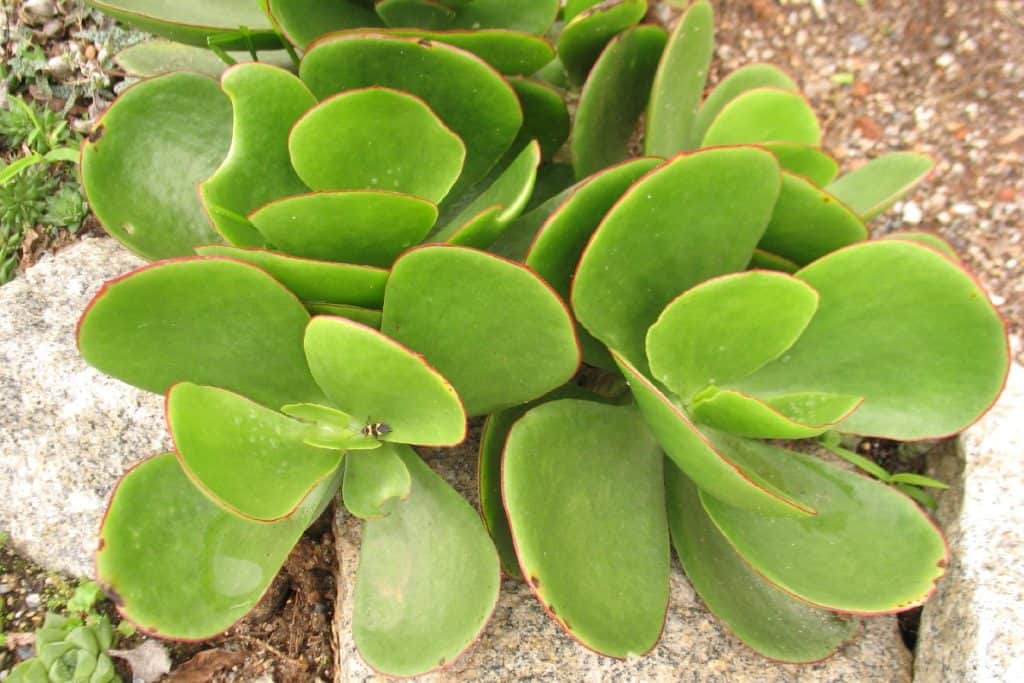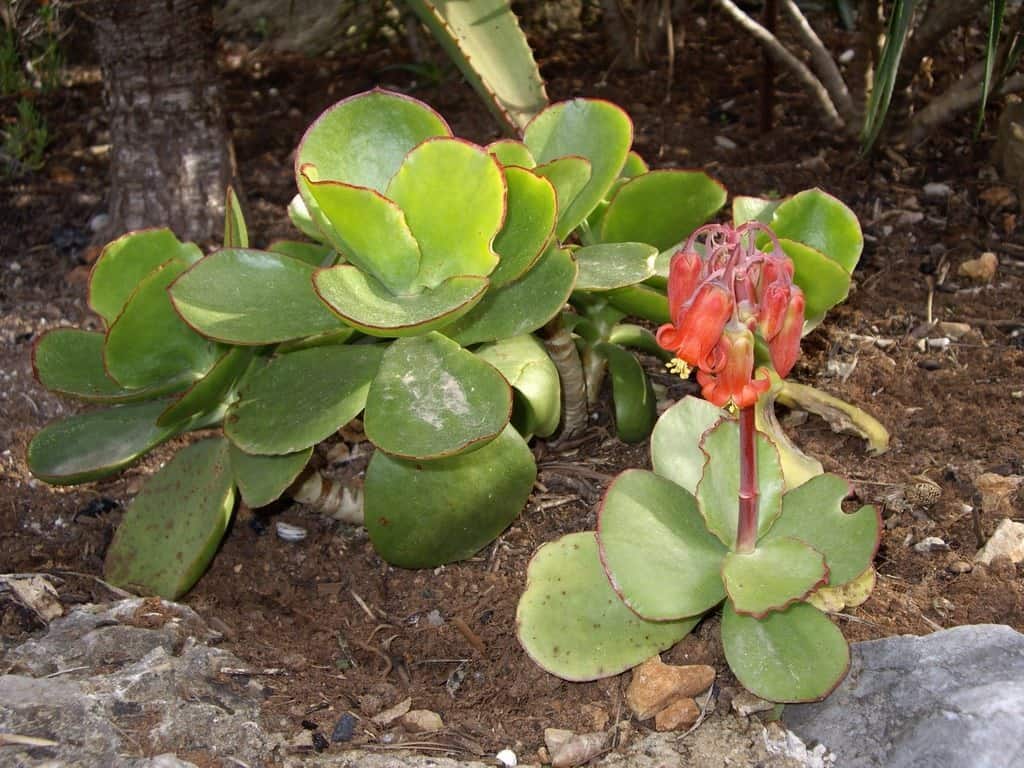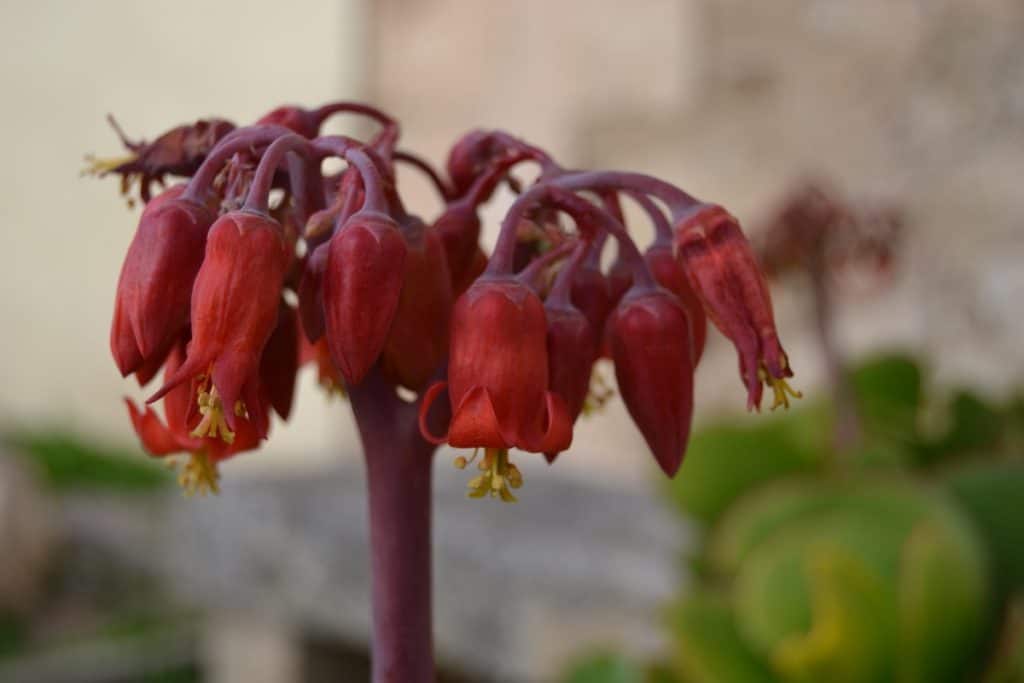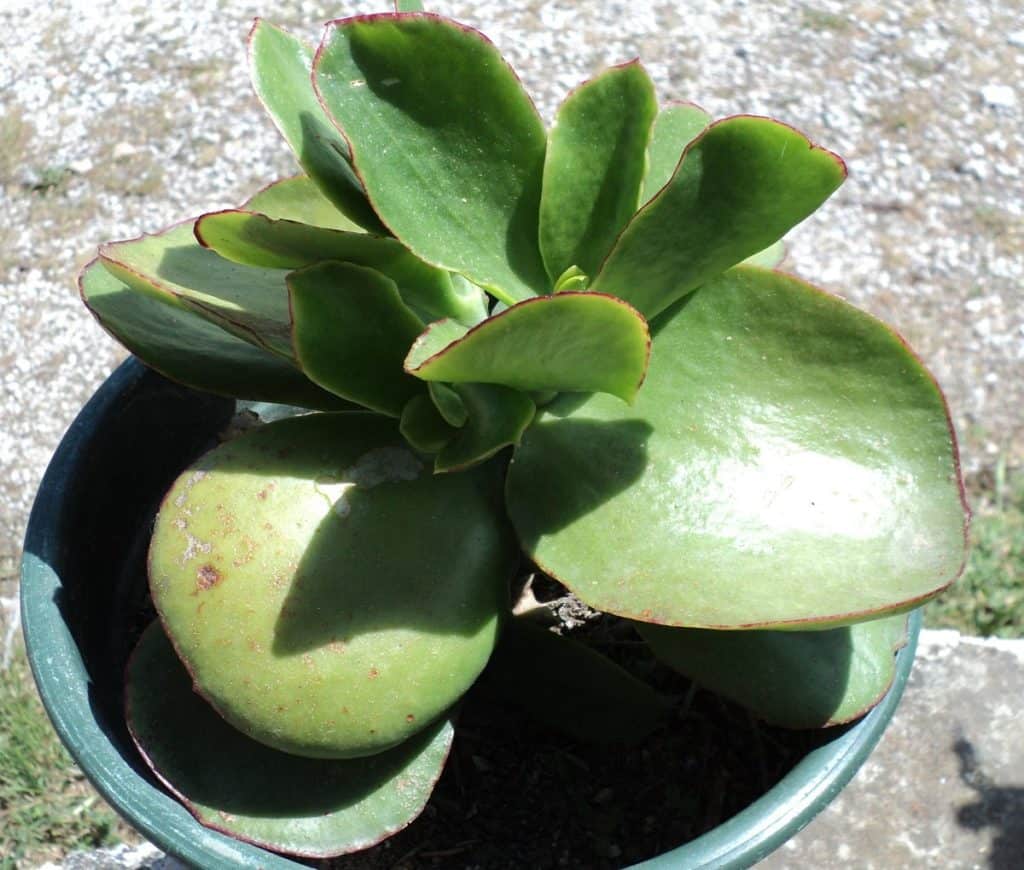Cotyledon Macrantha: Characteristics and Care
Have you ever seen a plant that looks more like an alien organism than something that grows on Earth? If not, get ready to meet one of the weirdest and coolest succulents around – Cotyledon orbiculata var. oblonga ‘Macrantha’! With its bizarre mushroom-like appearance and glossy green paddle-shaped leaves, this succulent is sure to be a conversation starter in any houseplant collection. Keep reading to learn all about this funky plant’s origins, care needs, and how to grow your own.

Contents
About Cotyledon Macrantha
Also called the pig’s ear or paddle plant, Cotyledon ‘Macrantha’ is a bushy succulent native to South Africa. In the wild, it can reach 3-6 feet tall, forming clusters of fleshy, oblong green leaves up to 8 inches long. The leaves have distinctive reddish margins and the plants produce red, bell-shaped flowers. This variety is a large-leafed cultivar of the species Cotyledon orbiculata.
Related Post:
25 Types Of Cotyledon Succulents (With Pictures)
How To Care For Cotyledon Macrantha
Light
Native to sunny, arid South African regions, ‘Macrantha’ thrives in bright light. Outdoors, it can take direct morning sun but needs afternoon shade from scorching midday rays. As a houseplant, situate it in a sunny window getting 6-8 hours of direct light daily. Supplementing with a grow light during winter months can help this sun-lover get enough brightness indoors.

Water
This species is fairly drought tolerant but should not be allowed to completely dry out. During the growing season, water thoroughly but infrequently, waiting for the soil to fully dry out between waterings. Expect to water every 2-3 weeks in summer. Cut back watering in winter but don’t let it dry out completely.
Soil
Like most succulents, ‘Macrantha’ requires very well-draining soil to prevent rot. Use a gritty succulent potting mix, or make your own by combining regular potting soil with materials like coarse sand, perlite, or pumice to enhance drainage.

Fertilizer
Feed ‘Macrantha’ every 4-6 weeks during spring and summer using a balanced succulent fertilizer diluted to half strength.
Temperature
‘Macrantha’ prefers warm temperatures between 65-90°F. It can’t tolerate frost, so protect outdoor plants when temps dip below freezing in winter by moving indoors or heavily mulching.
Pruning
Trim off dead, damaged or unsightly leaves as needed using clean pruners. Prune to shape the plant if desired.
Potting and Repotting
Use containers with ample drainage holes when potting or repotting. Plan to repot every 2-3 years in early spring before new growth emerges.

Pests and Problems
Watch for common houseplant pests like mealybugs, spider mites and fungus gnats. Wipe away any bugs with a damp cloth or treat with an insecticidal soap spray. Root rot from overwatering is the biggest threat – let soil dry fully before watering again.
How To Propagate Cotyledon Macrantha
This variety can be easily propagated from leaf cuttings or stem cuttings to grow new plants. Follow these steps for each propagation method:
Leaf Cuttings:
- Remove a healthy, mature leaf from the mother plant’s stem.
- Allow the leaf cutting to callous over for 1-2 days before continuing.
- Once calloused, dip the basal end of the leaf in a rooting hormone powder (optional).
- Plant the leaf vertically, with the calloused basal end buried about 1 inch deep in a well-draining potting mix.
- Lightly mist the soil to settle the leaf in place.
- Place the potted leaf in a warm spot with bright, indirect light.
- In 2-4 weeks, new tiny rosettes should start emerging from the leaf’s base.
- Once new rosettes have sprouted roots, you can gently transplant them into their own small pots.
Stem Cuttings:
- Using clean shears, cut off a 3-4 inch stem piece from a mature ‘Macrantha’ plant.
- Allow the stem cutting to callous over for 2-3 days before propagating.
- Once calloused, dip the cut end in a rooting hormone if desired.
- Plant the stem vertically in a well-draining potting mix, burying 1-2 inches of the stem.
- Lightly water the soil and place in a warm, bright location.
- In 4-6 weeks, roots should develop and new growth may appear from the stem nodes.
- Once sufficiently rooted, you can transplant the new propagation into its own pot.
With a little patience, both leaf and stem cuttings will produce new plants that can be potted up to grow on their own. Propagating ‘Macrantha’ this way allows you to multiply your collection of these quirky succulents!
